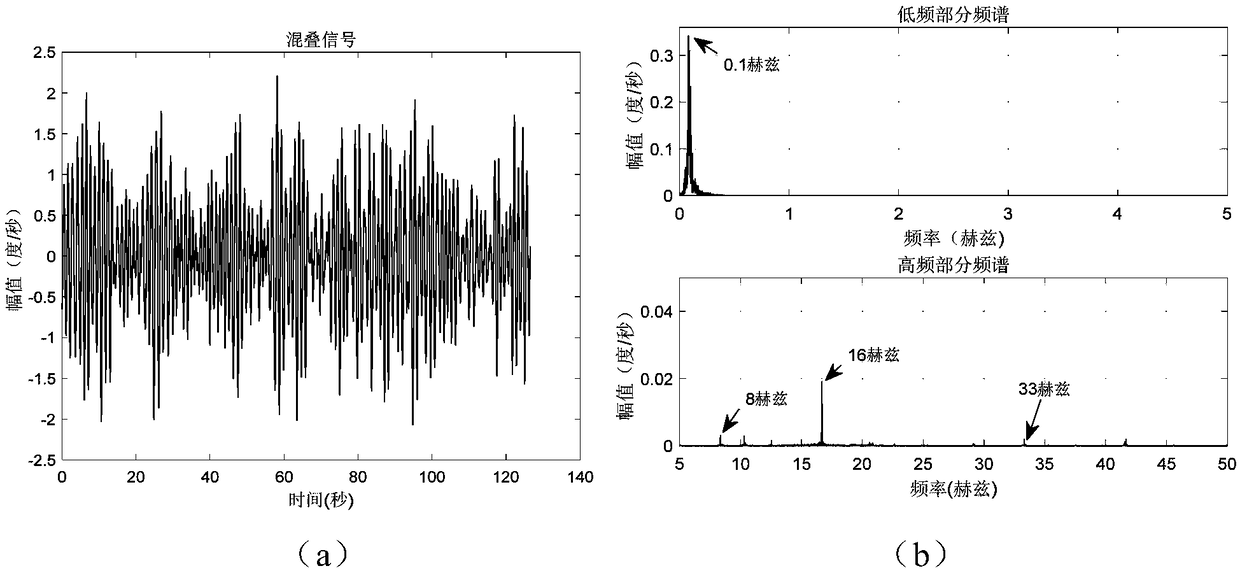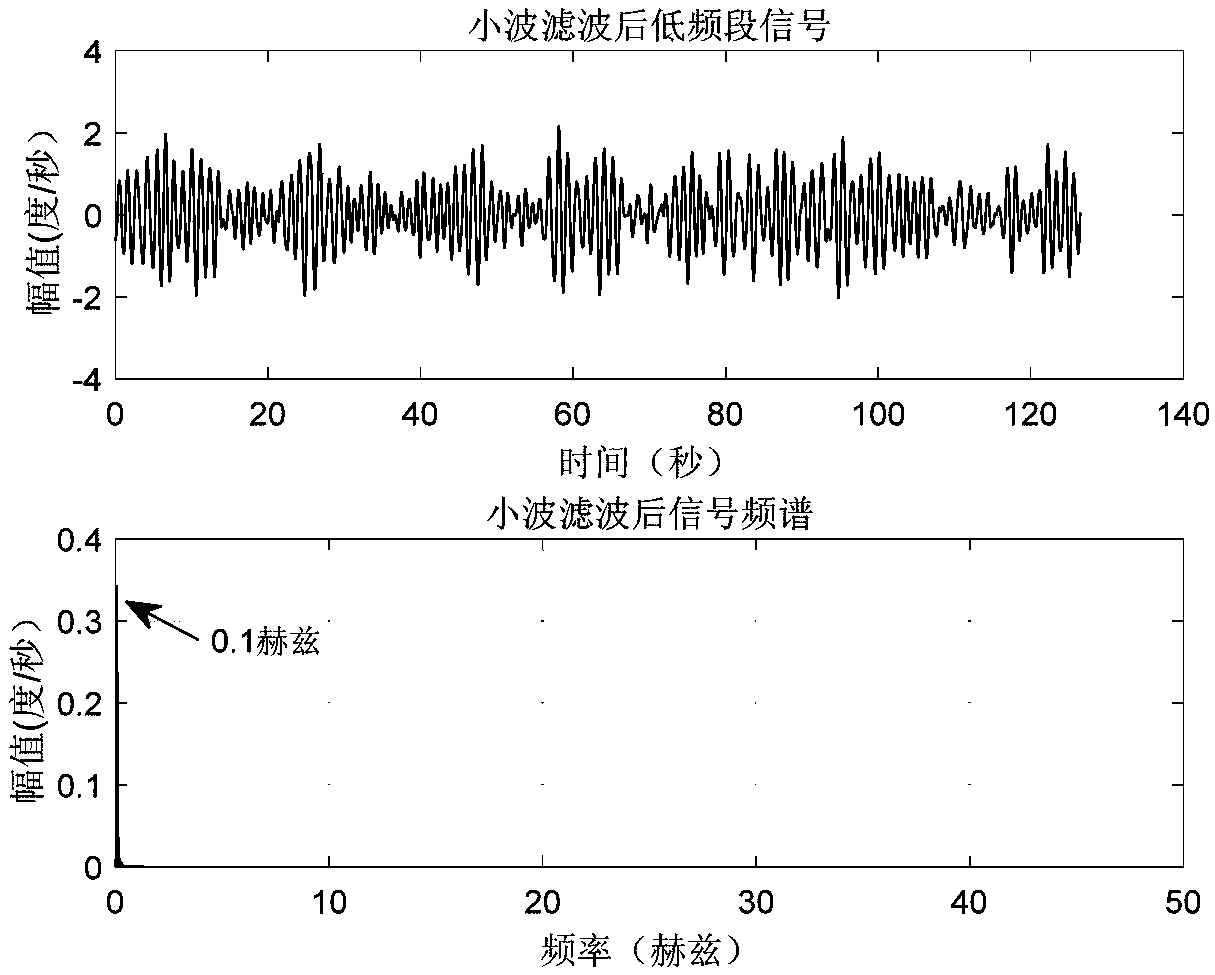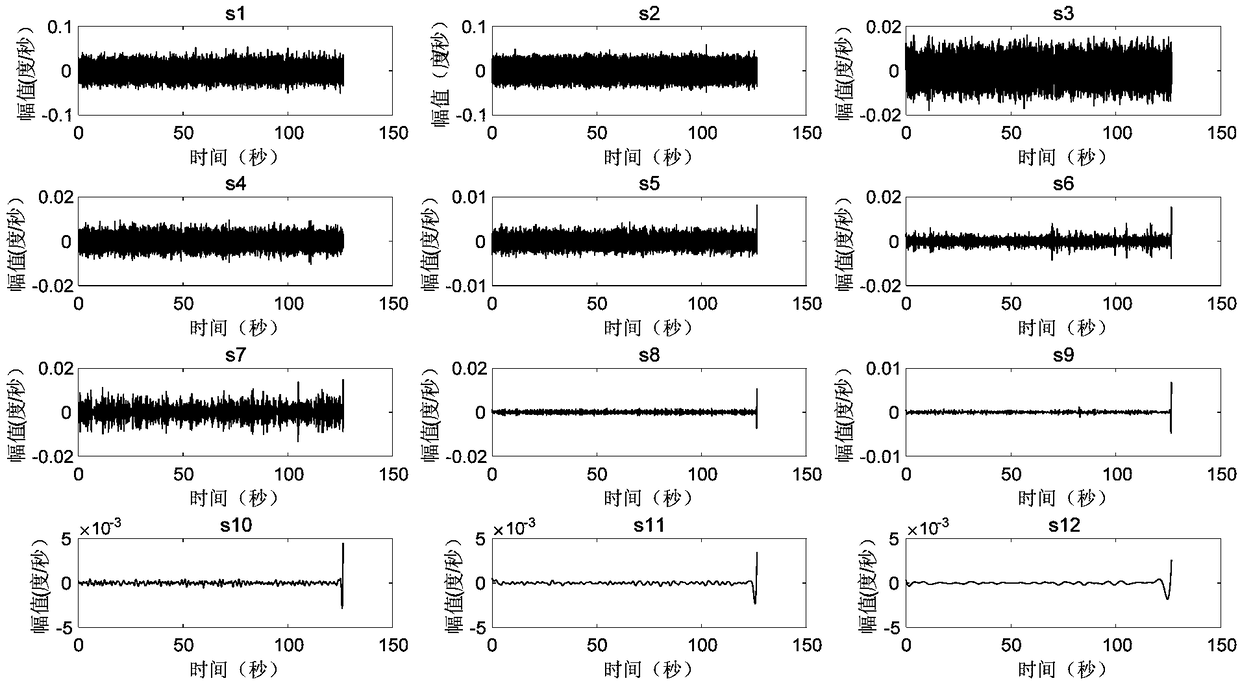Inertial sensor aliasing interference signal separation method
An inertial sensor and interference signal technology, applied in the directions of instruments, measurement devices, surveying and navigation, etc., can solve problems such as unfavorable engineering implementation of artificial parameter settings, complex interference of inertial sensors, and difficulty in accurate models of interference sources, so as to improve self-adaptation. performance, reduce dependencies, and require less installation conditions
- Summary
- Abstract
- Description
- Claims
- Application Information
AI Technical Summary
Problems solved by technology
Method used
Image
Examples
Embodiment Construction
[0030] Embodiments of the present invention will be described below in conjunction with the accompanying drawings. However, the following examples are limited to explain the present invention.
[0031] The following is an example of the aliasing interference signal output by the inertial sensor in the photoelectric tracking system under shipboard conditions. Concrete implementation steps of the present invention are as follows:
[0032] The first step is to analyze the frequency spectrum of the inertial sensor output aliasing signal as figure 1 As shown in the figure, it can be seen from the figure that the aliasing disturbance signal output by the fiber optic gyroscope in the background of the ship is mainly composed of four obvious frequency band signals, which are the low frequency band signal of about 0.1 Hz and the signal of about 10 Hz, about 16 Hz, and 30 Hz. above the high frequency band signal.
[0033] In the second step, according to the characteristic analysis o...
PUM
 Login to View More
Login to View More Abstract
Description
Claims
Application Information
 Login to View More
Login to View More - R&D
- Intellectual Property
- Life Sciences
- Materials
- Tech Scout
- Unparalleled Data Quality
- Higher Quality Content
- 60% Fewer Hallucinations
Browse by: Latest US Patents, China's latest patents, Technical Efficacy Thesaurus, Application Domain, Technology Topic, Popular Technical Reports.
© 2025 PatSnap. All rights reserved.Legal|Privacy policy|Modern Slavery Act Transparency Statement|Sitemap|About US| Contact US: help@patsnap.com



